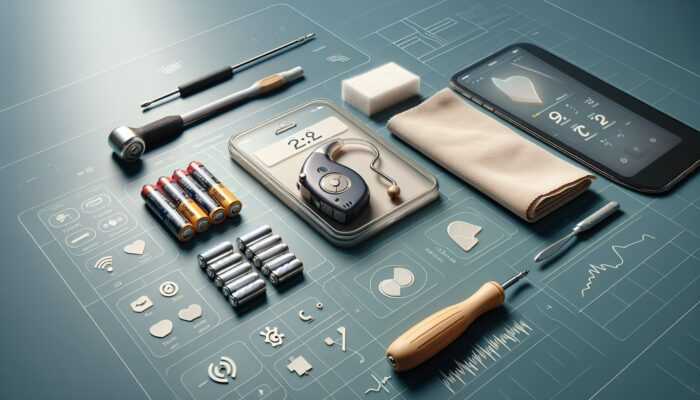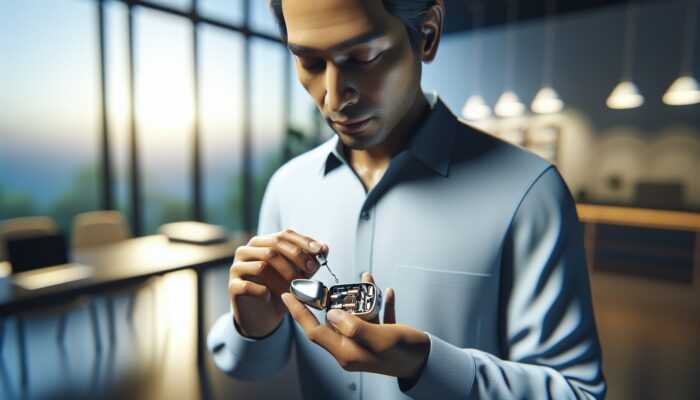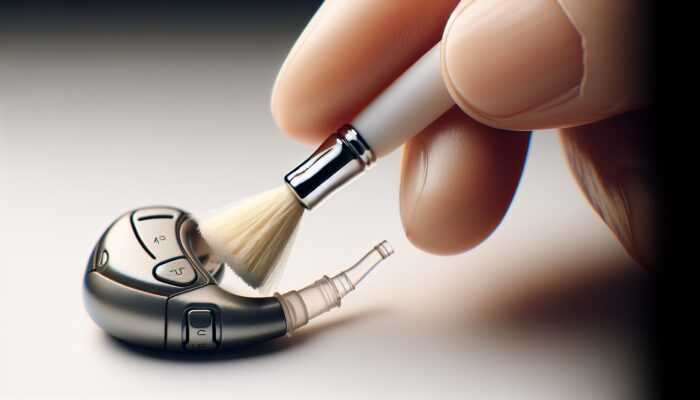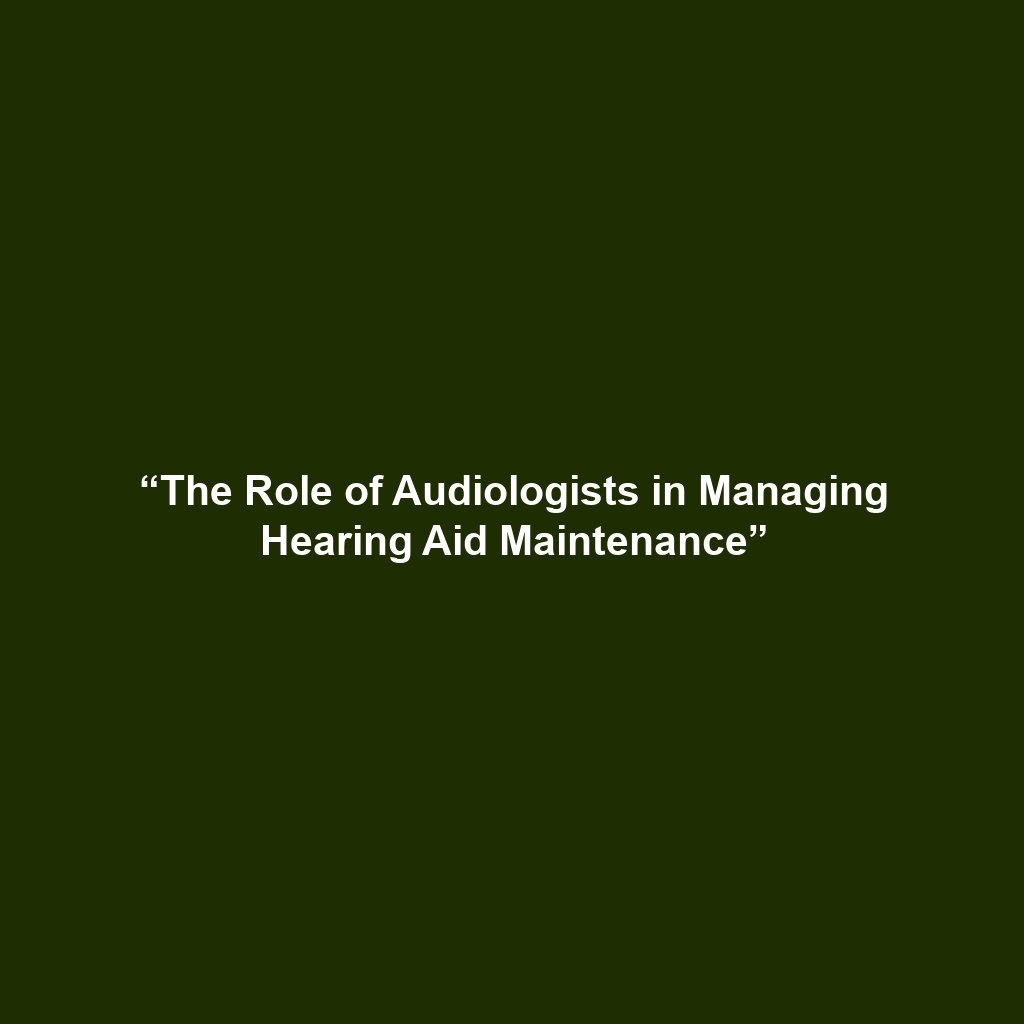Essential Daily Routines for Optimal Hearing Aid Maintenance
Hearing aids are intricate devices that demand a strong commitment to hygiene to ensure their optimal performance. Establishing a reliable daily maintenance routine is not just about keeping them visually appealing; it has a direct impact on sound quality, longevity, and the overall user experience. Consistent upkeep, which includes cleaning techniques, moisture checks, and battery care, lays the groundwork for the best practices for hearing aid hygiene that every user should embrace.
Effective Cleaning Techniques for Hearing Aids
Utilizing a soft cloth and a gentle brush is essential for the daily upkeep of hearing aids. These tools are indispensable as dust, debris, and natural skin oils quickly accumulate, which can adversely affect their functionality and sound clarity. A soft cloth can effectively wipe away visible dirt, while a specialized brush designed specifically for hearing aids can gently dislodge stubborn particles lodged in hard-to-reach areas. Pay special attention to the microphone and receiver openings, as these regions are particularly susceptible to blockages that can significantly muffle sound quality.
Daily cleaning not only enhances the device’s performance but also plays a crucial role in promoting ear health for the user. Neglecting this vital aspect of hygiene can lead to infections or irritations caused by trapped moisture and debris. Therefore, it’s imperative to establish a regular cleaning routine, ideally syncing it with daily activities such as brushing teeth or applying skincare. This will help reinforce the habit and ensure that hearing aids remain clean and functional.
As hearing aids evolve and become more sophisticated, users are encouraged to consult their manufacturer’s guidelines for any specific cleaning recommendations. Certain models may incorporate unique features necessitating specialized cleaning methods, making adherence to these guidelines paramount for fostering a lasting and effective relationship with the device.
Daily Moisture Check: A Key Step in Hearing Aid Care
Moisture can act as a silent adversary to hearing aids, potentially leading to corrosion and a shortened lifespan. Conducting a daily inspection for moisture is critical, particularly in humid climates or for users who perspire more than usual due to physical activity. A visual inspection of the device can often reveal signs of moisture, but employing a moisture detection tool adds an extra layer of security to your maintenance routine.
It’s advisable to store hearing aids in a dry environment, and users might want to consider investing in a drying kit or a dehumidifier tailored specifically for hearing aids. These tools work effectively to extract excess moisture overnight, ensuring that the device is ready for use the following day.
Regular moisture checks can prevent unexpected malfunctions and costly repairs, making this proactive approach an essential element of the best practices for hearing aid hygiene that cannot be overlooked.
Battery Management: Ensuring Consistent Power Supply
Batteries serve as the lifeblood of hearing aids, and their care is crucial for uninterrupted functionality. Proper handling and storage of batteries are essential to ensure that hearing aids operate consistently and efficiently. Users should routinely check battery levels and replace them before they are fully depleted to avoid any unexpected interruptions in audio clarity and performance.
Storing batteries in a cool, dry location, away from direct sunlight or heat sources, can significantly enhance their lifespan. Furthermore, it is essential to handle batteries with care, avoiding exposure to moisture or extreme temperatures, both of which can adversely affect performance. Following the manufacturer’s specifications regarding battery type is equally important, as using incompatible batteries can lead to device malfunctions.
By prioritizing battery care, users can improve their experience and ensure that their hearing aids remain a reliable and effective tool in their daily routines.
Comprehensive Weekly Deep Cleaning for Enhanced Device Performance
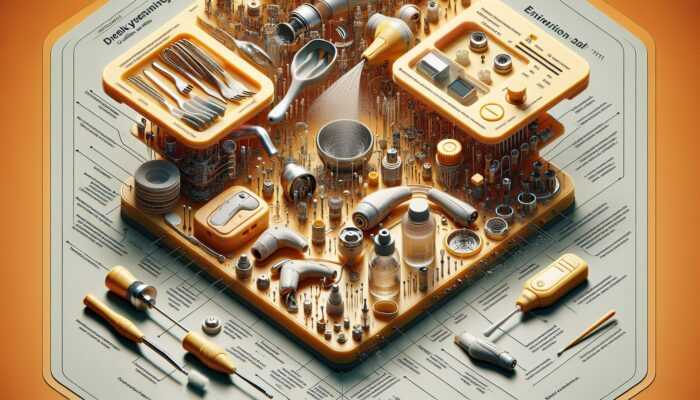
While daily maintenance is vital, implementing a thorough weekly cleaning routine elevates the best practices for hearing aid hygiene to a new standard. This deep cleaning process involves disassembling components, utilizing specialized tools, drying and reassembling parts, inspecting for damage, and applying lubrication. Each of these steps contributes significantly to enhancing both functionality and the longevity of the hearing aids.
Careful Disassembly of Hearing Aid Components
Thoughtfully disassembling hearing aids is an essential aspect of effective weekly deep cleaning. This procedure allows users to access all components, facilitating a comprehensive cleaning that goes beyond superficial maintenance. Although it may seem intimidating, gaining an understanding of the specific parts of a hearing aid and diligently following the manufacturer’s instructions can make this task both manageable and safe.
During the disassembly process, users should take extra care to remember how the various pieces fit together. Many find it helpful to capture pictures as they disassemble, which can greatly assist in the reassembly process. This meticulous attention to detail can prevent errors during reassembly, ensuring the integrity and functionality of the device are maintained.
Once disassembled, users can utilize a soft brush along with specialized cleaning solutions specifically formulated for hearing aids to eliminate any accumulated wax or debris. Addressing these concerns promptly can have a significant positive impact on sound quality and overall device performance.
Utilizing Specialized Tools for Effective Cleaning
Employing specialized cleaning tools is vital for effectively maintaining the hygiene of hearing aids. These tools are meticulously designed to reach challenging areas where wax and debris may accumulate, such as tubing, receivers, and microphones. Utilizing generic cleaning tools could lead to scratches or damage, making the investment in specialized kits a smart decision for users.
Examples of these specialized tools include wax removal tools and brushes that can navigate narrow openings without causing harm. Users should become familiar with these tools and their functions to maximize the effectiveness of their cleaning routines. Many hearing aid manufacturers provide cleaning kits that encompass these essential tools, ensuring users have everything they need for optimal maintenance.
Incorporating specialized cleaning tools into a weekly routine not only boosts hygiene but also enhances the overall functionality of hearing aids, resulting in improved sound quality and performance.
Drying and Reassembling Hearing Aids: Key Steps for Longevity
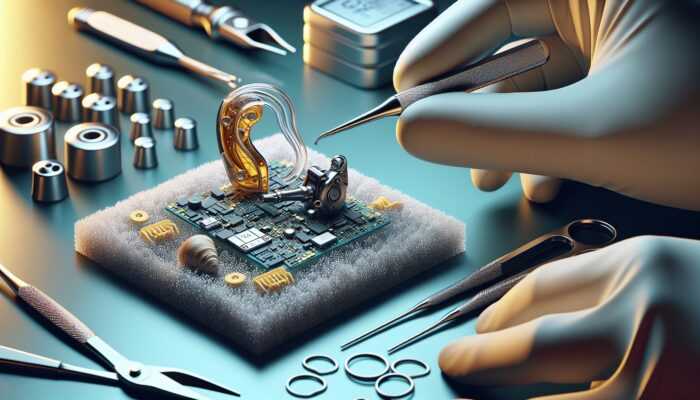
Following a thorough cleaning, it’s imperative to dry all components before reassembling. Moisture accumulation can lead to significant damage over time, particularly in electronic devices like hearing aids. Users may want to consider utilizing a hearing aid dryer or desiccant to absorb any residual moisture before reassembling the device.
The drying process is equally crucial when it comes to the longevity of the components. Once all parts are dried, reassembly should be conducted carefully, adhering to the reverse order of disassembly. Ensuring that each component is correctly positioned is vital to avoid potential damage and to maintain the hearing aids’ functionality.
Following this drying and reassembly procedure is a critical aspect of the best practices for hearing aid hygiene, empowering users to enjoy a consistently superior auditory experience.
Inspecting for Damage: A Proactive Approach
Regular inspections during deep cleaning sessions are essential for identifying signs of wear or damage before they escalate into significant issues. Users should look for any visible signs of distress, such as cracks, frayed wires, or loose components. Detecting these problems early allows for timely repairs, which are often relatively straightforward and cost-effective.
Additionally, users should remain attuned to any changes in sound quality that might indicate an underlying problem. Unusual sounds, distortion, or sudden variations in volume can all signal the need for further inspection or professional assistance.
Incorporating routine checks for damage into a weekly cleaning regimen enhances the overall health of hearing aids, ensuring they remain functional and effective for users.
Applying Lubrication: Enhancing Performance and Longevity
During the weekly deep cleaning process, applying the appropriate lubrication to moving parts can help reduce friction, ensuring smoother operation. Over time, components can become stiff or sticky due to the buildup of wax and oils. Utilizing lubricating products specifically designed for hearing aids can alleviate this issue, promoting both longevity and function.
Users should adhere to the manufacturer’s recommendations regarding suitable lubricants for their specific devices. This specialized lubrication not only enhances performance but also reduces wear and tear, ultimately contributing to an improved auditory experience.
Integrating lubrication into the weekly routine underscores the importance of proactive care in maintaining hearing aids and highlights a crucial aspect of the best practices for hearing aid hygiene that is often overlooked.
Strategies for Preventing Earwax Buildup and Enhancing Hearing Aid Functionality
One of the most prevalent challenges associated with hearing aids is earwax buildup, which can significantly hinder their performance. Implementing preventative measures is vital for maintaining both hygiene and functionality. This section delves into the importance of regular ear checks, utilizing earwax guards, and considering professional cleaning services, each playing a crucial role in effectively managing earwax.
Establishing Routine Ear Checks for Optimal Ear Health
Routine ear checks should be a fundamental part of the lives of hearing aid users. These checks help identify and manage earwax buildup, preventing obstructions that might impede the functionality of hearing aids. Regular appointments with an audiologist can aid in monitoring ear health and provide guidance on managing earwax, which is essential for achieving optimal hearing.
Individuals can also conduct self-checks at home by inspecting their ears in a well-lit environment. If earwax becomes visible or if discomfort arises, seeking professional assistance is advisable. Regular monitoring can help prevent the accumulation of excessive wax, which can lead to more complex complications.
Moreover, many users often overlook the influence of diet and hydration on earwax production. Maintaining a balanced diet and staying well-hydrated can effectively help manage earwax levels, fostering an overall healthier auditory environment.
Utilizing Earwax Guards: A Proactive Preventative Measure
Incorporating earwax guards into hearing aids is an effective way to safeguard devices against wax accumulation. These guards serve as a protective barrier, preventing earwax from entering microphones and receivers, which can lead to sound distortion or total blockage.
Users should routinely check and replace earwax guards according to the manufacturer’s recommendations, as they can become saturated over time. This simple yet effective preventative step can help users avoid more significant problems down the line, including costly repairs or replacements.
Educating oneself on the proper use and replacement of earwax guards can significantly enhance the longevity of hearing aids. By incorporating this practice into regular maintenance routines, users can greatly improve their overall experience with their hearing aids.
Seeking Professional Cleaning Services for Comprehensive Care
Engaging professional cleaning services can provide invaluable assistance in effectively managing stubborn earwax and maintaining the health of hearing aids. Professionals have access to specialized tools that can remove built-up earwax without damaging the delicate components of the devices.
Users should contemplate scheduling professional cleanings periodically, especially if they notice a decline in sound quality or if routine cleaning becomes insufficient. Professionals can also offer valuable insights regarding ear hygiene, equipping users with the knowledge to prevent future buildup.
Regular professional cleaning not only guarantees that hearing aids remain hygienic but also contributes to their overall functionality, making this practice a vital component of the best practices for hearing aid hygiene.
Protecting Hearing Aids from Environmental Hazards
Environmental factors can greatly affect hearing aids, leading to potential damage and reduced functionality. Understanding how to guard devices against moisture, dust, and extreme temperatures is essential for maintaining their performance. This section discusses effective protective measures and underscores their significance within the framework of the best practices for hearing aid hygiene.
Strategies for Avoiding Moisture Exposure
Moisture exposure is one of the leading causes of hearing aid malfunction. Humidity, perspiration, and even water from cleansing routines can cause damage that is often irreversible. To mitigate this risk, users should avoid wearing hearing aids during activities that involve excessive moisture, such as swimming.
In addition to avoiding moisture exposure, utilizing protective cases and drying kits can provide an extra layer of security for devices. Many manufacturers offer moisture-resistant hearing aids, which can be particularly advantageous for users living in humid climates.
Establishing the habit of removing hearing aids before showering or engaging in outdoor activities can significantly reduce the risk of moisture-related damage. This proactive approach to moisture exposure is a crucial part of maintaining hearing aid hygiene.
Implementing Dust Shields for Optimal Device Care
Dust can accumulate rapidly in hearing aids, obstructing sound quality and impairing functionality. Utilizing protective cases and covers can substantially minimize exposure to dust when hearing aids are not in use. This straightforward practice ensures that devices remain clean and readily available for use at all times.
It is also advisable to keep hearing aids away from dusty environments as much as feasible. For users working in construction or other dusty settings, investing in additional protective gear may be necessary to safeguard their devices.
Incorporating these protective measures into daily routines effectively shields hearing aids from dust and debris, preserving sound quality and performance.
Temperature Considerations for Hearing Aid Longevity
Extreme temperatures can harm hearing aids, adversely affecting their functionality and lifespan. It is crucial to store devices at moderate temperatures, avoiding areas where they might be exposed to excessive cold or heat, such as car dashboards or near heating sources.
Users should be cognizant of the impact that sudden temperature changes can have on their devices, especially when transitioning between different environments. Allowing hearing aids to acclimate to new temperatures before use can help prevent issues related to functionality.
Educating oneself about temperature considerations associated with hearing aids is an integral part of the best practices for hearing aid hygiene, and it can significantly enhance device longevity.
Best Practices for Proper Storage and Handling of Hearing Aids
Proper storage and handling of hearing aids are vital for preserving their integrity and performance. Implementing strategies such as utilizing protective cases, practicing gentle handling, and avoiding chemical exposure all play an essential role in maintaining the quality of auditory devices.
Using Protective Cases for Device Safety
Storing hearing aids in protective cases when not in use is one of the simplest yet most effective ways to prevent damage and dirt accumulation. Protective cases shield devices from dust, moisture, and accidental drops, all of which can compromise functionality.
Selecting high-quality, durable cases specifically designed for hearing aids is crucial. Some cases may also feature drying capabilities, further enhancing their protective attributes. Users should cultivate the habit of storing their hearing aids in these cases to ensure longevity and optimal functionality.
By prioritizing proper storage, users can significantly reduce the risks of damage and maintain the overall hygiene of their hearing aids.
Careful Handling to Avoid Damage
Gentle handling is a critical component of maintaining hearing aids. Users should avoid tossing or dropping devices, as this can lead to physical damage that may not be immediately noticeable. Establishing a routine for taking out and putting away hearing aids can reinforce careful handling habits.
When inserting and removing hearing aids, users should do so over soft surfaces, such as beds or couches, to minimize damage if the devices slip from their fingers. Regular reminders to treat these devices with care can help foster a mindset that prioritizes the longevity and performance of hearing aids.
This careful handling directly contributes to a positive auditory experience, reinforcing the importance of attentive care in the best practices for hearing aid hygiene.
Avoiding Chemical Exposure to Extend Device Life
Keeping hearing aids away from chemicals and cosmetics is crucial for preserving their appearance and functionality. Many common household products, including hairsprays, perfumes, and cleaning agents, can adversely affect the delicate components of hearing aids.
Users should consciously apply cosmetics before inserting hearing aids and avoid using products that could come into contact with the devices. Storing hearing aids in areas that are free from chemical exposure can further safeguard their longevity and performance.
Educating oneself on the effects of chemical exposure is vital for hearing aid users, enabling them to make informed decisions about their usage and care, thereby enhancing their overall experience.
The Importance of Regular Professional Check-ups for Hearing Aids
Regular professional check-ups are foundational for maintaining hearing aids in optimal condition. Scheduling maintenance visits, making necessary adjustments, staying updated with technological advances, and ensuring professional cleanings all play a significant role in prolonging the longevity and functionality of hearing aids.
Establishing a Routine for Maintenance Visits
Creating a routine for professional check-ups guarantees that hearing aids remain in peak condition. During these visits, audiologists can conduct comprehensive examinations, ensuring that devices are functioning optimally and addressing any concerns users may have.
Regular maintenance visits facilitate timely adjustments, keeping hearing aids aligned with the user’s evolving auditory needs. Users should aim for at least an annual appointment, or more frequently if they experience changes in hearing or device performance.
This proactive approach to professional maintenance significantly contributes to the longevity of hearing aids and underscores the necessity of regular check-ups within the best practices for hearing aid hygiene.
Making Necessary Adjustments and Repairs
Professional adjustments and repairs are often essential to ensure that hearing aids continue to fit well and function effectively. Over time, users may experience changes in comfort or audio quality, making these adjustments crucial for optimal performance.
Audiologists are trained to make precise adjustments that may not be feasible through at-home maintenance. Recognizing when to seek professional assistance is critical—users should monitor their devices and seek help if they notice any changes in sound quality or comfort.
Incorporating this step into a regular maintenance routine reinforces the significance of professional care as a component of comprehensive hearing aid hygiene.
Keeping Up-to-Date with Technology
Staying informed about the latest advancements in hearing aid technology can immensely enhance user experience and device performance. With ongoing technological developments, newer models may provide improved sound processing, enhanced connectivity, and additional features that can significantly benefit users.
Regular consultations with audiologists can help users stay abreast of the latest innovations in hearing aid technology, making it easier to discern when upgrades may be warranted. This knowledge empowers users to make informed choices that elevate their auditory experiences.
By keeping technology current, users not only enjoy enhanced performance but also reinforce the importance of proactive care within the best practices for hearing aid hygiene.
The Role of Professional Cleanings in Device Maintenance
Regular professional cleanings are essential for preventing buildup and maintaining the hygiene and functionality of hearing aids. These cleanings present an opportunity for thorough assessments by trained professionals who can identify issues that may go unnoticed during routine care.
Audiologists possess specialized cleaning tools and techniques that ensure devices are kept in optimal condition. Users should consider scheduling these cleanings at least once every six months, or more frequently if they observe changes in sound quality.
Integrating professional cleanings into a maintenance plan emphasizes the crucial role that expert care plays in preserving hearing aids and highlights a key aspect of the best practices for hearing aid hygiene.
Empowering Users and Caregivers Through Education
Education serves as a powerful tool in the quest for effective hearing aid maintenance. Training on proper usage, recognizing signs of wear, and promoting regular maintenance routines among users and caregivers significantly enhances the overall experience and efficacy of hearing aids.
Training Users and Caregivers on Proper Hearing Aid Usage
Comprehensive training ensures that users and caregivers understand how to use and maintain hearing aids effectively. Knowing how to insert, remove, clean, and troubleshoot devices empowers users and caregivers, ultimately enhancing the user experience.
Training can be provided by audiologists during initial fittings or follow-up appointments. Users should feel encouraged to ask questions and seek clarification on any aspect of device usage. The more informed users are, the less likely they will encounter issues that could disrupt their auditory experience.
Regular refresher courses or informational sessions can also benefit users and caregivers, providing updated information on best practices and new technologies. Knowledge is indeed power, especially when it comes to preserving the integrity of hearing aids.
Recognizing Signs of Wear and Tear
Being aware of the signs of wear can help users and caregivers take timely action to maintain hearing aids. Changes in sound quality, physical appearance, or comfort can all indicate that a device requires attention.
Users should remain vigilant in monitoring their hearing aids and should not hesitate to consult professionals if they notice any unusual changes. Early identification of wear can prevent more severe issues and keep devices functioning at their best.
Awareness of wear signs reinforces the importance of vigilance and proactive care within the best practices for hearing aid hygiene, ensuring users can effectively maintain their devices.
Encouraging Consistent Maintenance Habits
Promoting regular maintenance routines among users and caregivers is essential for the longevity of hearing aids. Creating checklists, setting reminders, or incorporating cleaning habits into daily routines can help users stay diligent in their device care.
Sharing experiences and tips among users can also cultivate a supportive community that emphasizes the significance of regular maintenance. This shared knowledge can motivate individuals to prioritize their hearing aid hygiene, ultimately leading to improved outcomes.
By fostering a culture of proactive care and education, users can enhance their auditory experiences and reinforce the importance of the best practices for hearing aid hygiene.
Frequently Asked Questions About Hearing Aid Maintenance
What is the recommended frequency for cleaning my hearing aids?
Daily cleaning is highly recommended, complemented by a more thorough deep cleaning performed weekly. Regular checks and professional cleanings can further enhance hygiene and device performance.
What essential tools do I need for cleaning my hearing aids?
Essential cleaning tools include a soft cloth, a gentle brush, and specialized cleaning kits designed specifically for hearing aids to effectively reach challenging areas.
Is moisture capable of damaging my hearing aids?
Absolutely, moisture can inflict significant damage, including corrosion. It is crucial to keep hearing aids dry and to store them in moisture-resistant cases when not in use.
How can I effectively prevent earwax buildup in my hearing aids?
Regular ear checks, utilizing earwax guards, and seeking professional cleanings are all effective strategies for managing earwax and maintaining device functionality.
When is it appropriate to seek professional help for my hearing aids?
If you observe any changes in sound quality, comfort, or if routine cleaning becomes ineffective, it is advisable to consult a professional for assessment and repairs.
What are the indicators that my hearing aids may need repairs?
Indicators include distortion in sound quality, discomfort during usage, and any visible damage. Addressing these concerns early can prevent more significant problems.
Can I use standard cleaning products on my hearing aids?
No, it is advisable to avoid standard cleaning products, as they can harm delicate components. Use only manufacturer-approved cleaning solutions and tools for optimal care.
What is the best way to store my hearing aids properly?
Store hearing aids in protective cases away from heat and moisture. Ensure they are completely dry and clean before storage to prevent damage.
How often should I schedule visits with my audiologist?
Regular visits are recommended at least once a year, or more frequently if you experience changes in hearing or device performance.
What should I do if my hearing aid feels uncomfortable?
If you experience discomfort, consult your audiologist for an adjustment. Proper fit is crucial for both comfort and sound quality.
Explore our journey on X!
The post Hearing Aid Hygiene: Essential Tips for Best Practices appeared first on The Microsuction Ear Wax Removal Network.
